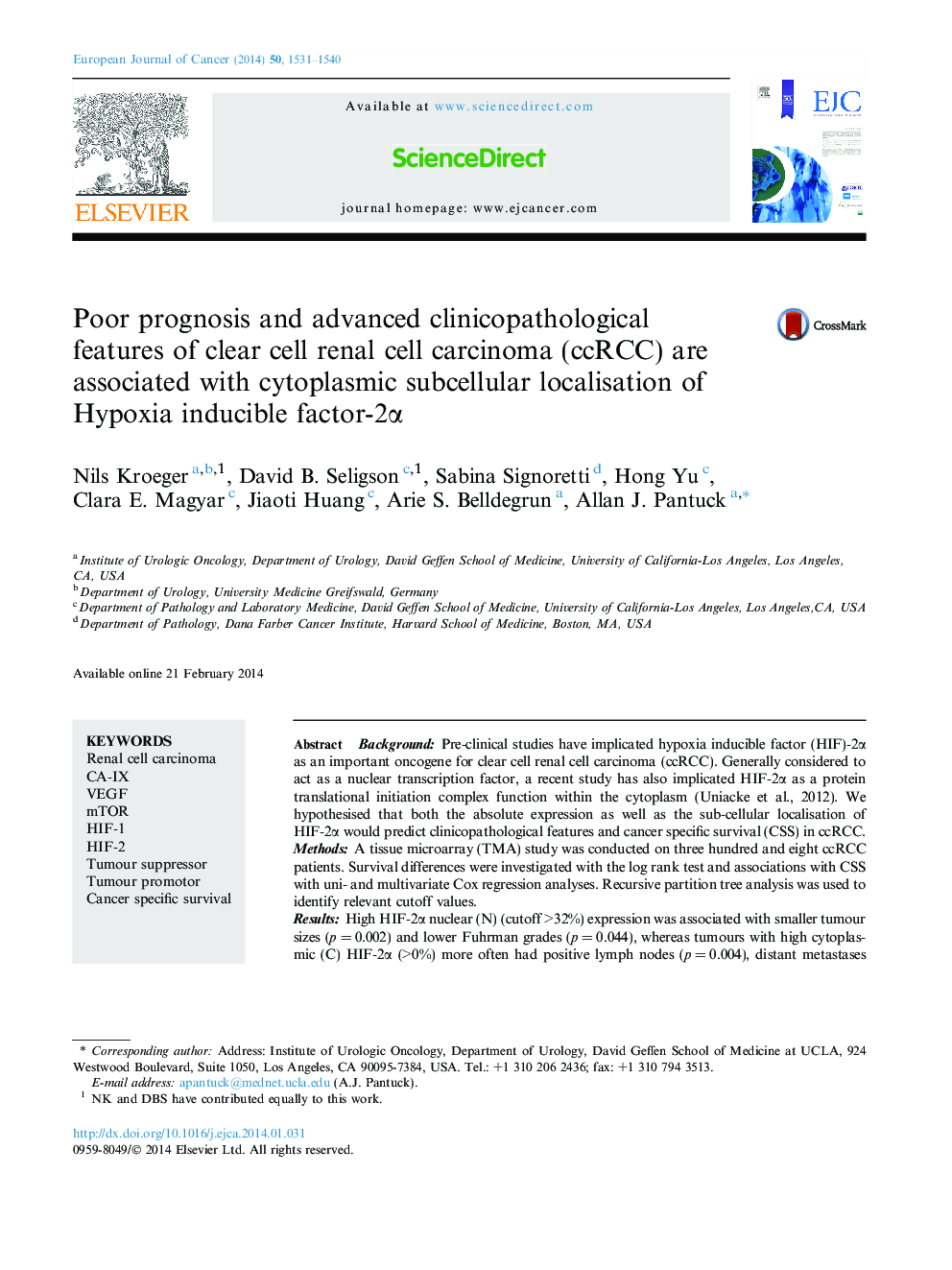| Article ID | Journal | Published Year | Pages | File Type |
|---|---|---|---|---|
| 2121929 | European Journal of Cancer | 2014 | 10 Pages |
BackgroundPre-clinical studies have implicated hypoxia inducible factor (HIF)-2α as an important oncogene for clear cell renal cell carcinoma (ccRCC). Generally considered to act as a nuclear transcription factor, a recent study has also implicated HIF-2α as a protein translational initiation complex function within the cytoplasm (Uniacke et al., 2012). We hypothesised that both the absolute expression as well as the sub-cellular localisation of HIF-2α would predict clinicopathological features and cancer specific survival (CSS) in ccRCC.MethodsA tissue microarray (TMA) study was conducted on three hundred and eight ccRCC patients. Survival differences were investigated with the log rank test and associations with CSS with uni- and multivariate Cox regression analyses. Recursive partition tree analysis was used to identify relevant cutoff values.ResultsHigh HIF-2α nuclear (N) (cutoff >32%) expression was associated with smaller tumour sizes (p = 0.002) and lower Fuhrman grades (p = 0.044), whereas tumours with high cytoplasmic (C) HIF-2α (>0%) more often had positive lymph nodes (p = 0.004), distant metastases (p = 0.021) and higher Fuhrman grades (p < 0.0001). After adjustment for TNM stage, Eastern Cooperative Oncology Group performance status (ECOG PS), and Fuhrman grade, both continuous (p < 0.0001) and dichotomised (p < 0.0001) HIF-2α C variables remained significant predictors of CSS, while neither HIF-2α N variable was retained.ConclusionOur investigation supports that HIF-2α may have a unique tumour promoter role in the cytoplasm. This preliminary finding justifies further experimental and mechanistic studies that examine the biological functions of HIF-2α when located in the cytoplasm.
